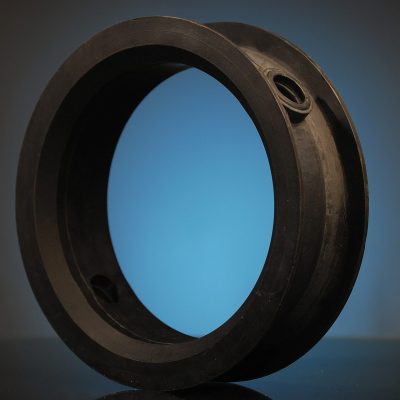Effective Uses Of Rubber Seals

Rubber seals find uses in numerous settings, thanks to the diverse compounds and properties of the material.
One most common application of rubber seals is creating airtight spaces like the cap of a jar or your car door. If aircraft were not using rubber seals (strips) on their doorways, they wouldn’t be able to reach higher altitudes without the cabin collapsing on itself and causing casualties.
While not all rubber compounds are resistant to chemicals, nitrile rubber used to be good at withstanding oil or fuel, but with the increased use of bio-fuels, it is no longer the preferred choice. Fluoroelastomers such as Viton™ are now the better option, if any contact will be made with petrol or diesel. Fluoroelastomers are suitable for automotive and aerospace applications.
Viton™ rubber can also resist temperature fluctuations, so aircraft rely on these for protection in extreme temperatures.
Uses Of Silicone Rubber
Silicone rubber is a reasonably stable rubber compound that can resist harsh temperatures while staying fully functional. This type of rubber is often used for household repair, hardware, and food storage, among other functions. Silicone can also be used as a freezer sealant since it’s not brittle under lower temperatures; the absence of carbon molecules makes it safe around food.
Electrical engineers apply silicone rubber to wrap aircraft wiring because of its non-flammable nature. Natural rubber equally functions as a suitable sealant due to its elasticity and resistance to wear and tear. Known for its unique versatility, silicone is ideal for making bespoke glazing doors and windows.
EPDM (Ethylene Propylene Diene Monomer)
EPDM production processes typically involve the copolymerisation of ethylene and propylene, followed by adding a third monomer called diene, which makes it possible for the material to be vulcanised with sulphur. The resulting compound is called “ethylene propylene diene monomer” (EPDM for short).
The main properties and uses of EPDM rubber include the following:
- Withstands max temperatures within the range of -59°C - +149°C (-75° - +300°F)
- Effective resistance to weather, ozone, and heat
- Suitable for electrical insulation applications
- Resistant to ketones, alkaline, and normal dilute acids.
- EPDM is widely applied in refrigeration (cold-food food environments), automotive cooling systems, and weather-stripping applications.
- Not very good at resisting oil, gas, kerosene, concentrated acids, and halogenated solvents.
Elastomers
The term “elastomer” has been coined from the word elastic (meaning being able to stretch under a force and return to its original state). Elastomers are polymeric compounds that can stretch like rubber. These have inherent elastic properties, including flexibility, high elongation, damping, and resilience.
The damping property of rubber allows it to convert mechanical energy to heat when it’s deflected. Elastomers are suitable materials for making gaskets, seals, isolators, and things like that.
The production of elastomers has shifted from natural rubber to specially engineered rubber compounding variations. Variations in elastomer production techniques create new possibilities for rubber seal manufacturers to meet the market’s changing needs.
To select the best rubber seal material, you need to follow the appropriate criteria for elastomer performances in the gasket and seal applications. Furthermore, engineers often have to examine a multitude of factors to select the most effective material.
Related articles
If you need any help or advice simply give us a call or fill in the enquiry form and one of our technical team will help you out.
